Gene expression profiling in non-human primate jejunum, ileum and colon after total-body irradiation: a comparative study of segment-specific molecular and cellular responses
- PMID: 26589571
- PMCID: PMC4654820
- DOI: 10.1186/s12864-015-2168-y
Gene expression profiling in non-human primate jejunum, ileum and colon after total-body irradiation: a comparative study of segment-specific molecular and cellular responses
Abstract
Background: Although extensive studies have investigated radiation-induced injuries in particular gastrointestinal (GI) segments, a systematic comparison among the different segments on the basis of mode, magnitude and mechanism has not been reported. Here, a comparative study of segment-specific molecular and cellular responses was performed on jejunum, ileum and colon obtained at three time points (4, 7 and 12 days after irradiation) from non-human primate (Rhesus macaque) models exposed to 6.7 Gy or 7.4 Gy total body irradiation (TBI).
Results: Pathway analysis on the gene expression profiles identified radiation-induced time-, dose- and segment-dependent activation of tumor necrosis factor α (TNFα) cascade, tight junction, apoptosis, cell cycle control/DNA damage repair and coagulation system signaling. Activation of these signaling pathways suggests that colon sustained the severest mucosal barrier disruption and inflammation, and jejunum the greatest DNA damage, apoptosis and endothelial dysfunction. These more pronounced alterations correlate with the high incidence of macroscopic pathologies that are observed in the colon after TBI. Compared to colon and jejunum, ileum was resistant to radiation injury. In addition to the identification a marked increase of TNFα cascade, this study also identified radiation induced strikingly up-regulated tight junction gene CLDN2 (196-fold after 7.4-Gy TBI), matrix degradation genes such as MMP7 (increased 11- and 41-fold after 6.7-Gy and 7.4-Gy TBI), and anoikis mediated gene EDA2R that mediate mucosal shedding and barrier disruption.
Conclusions: This is the first systematic comparative study of the molecular and cellular responses to radiation injury in jejunum, ileum and colon. The strongest activation of TNFα cascades and the striking up-regulation of its down-stream matrix-dissociated genes suggest that TNFα modulation could be a target for mitigating radiation-induced mucosal barrier disruption.
Figures
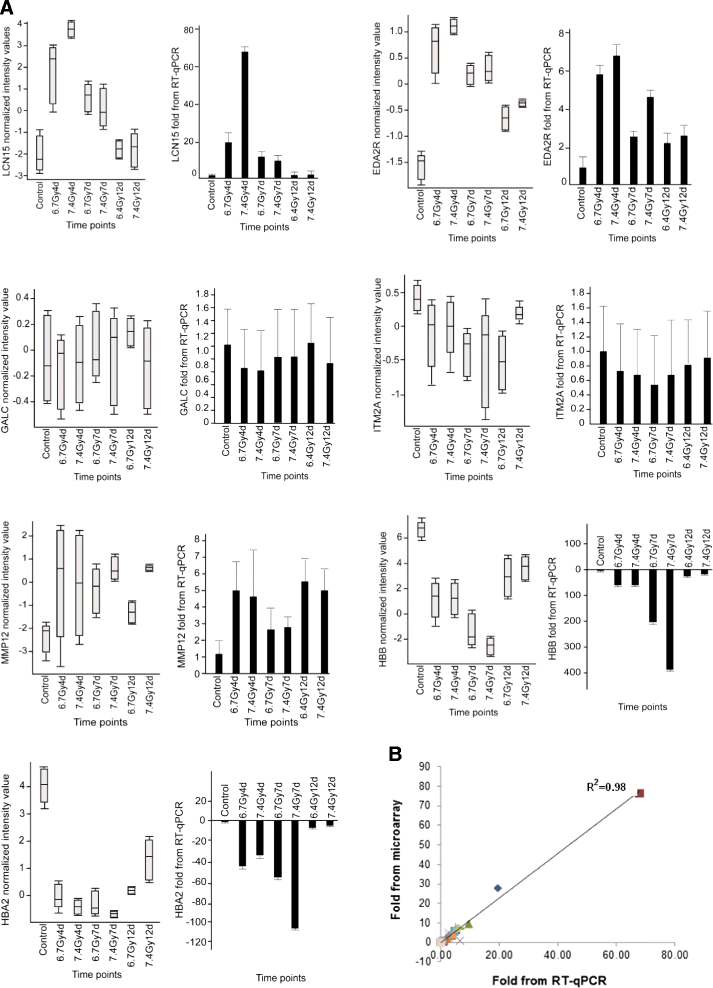

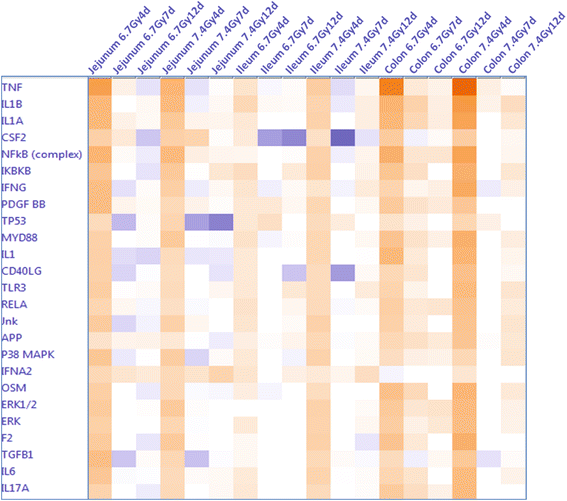
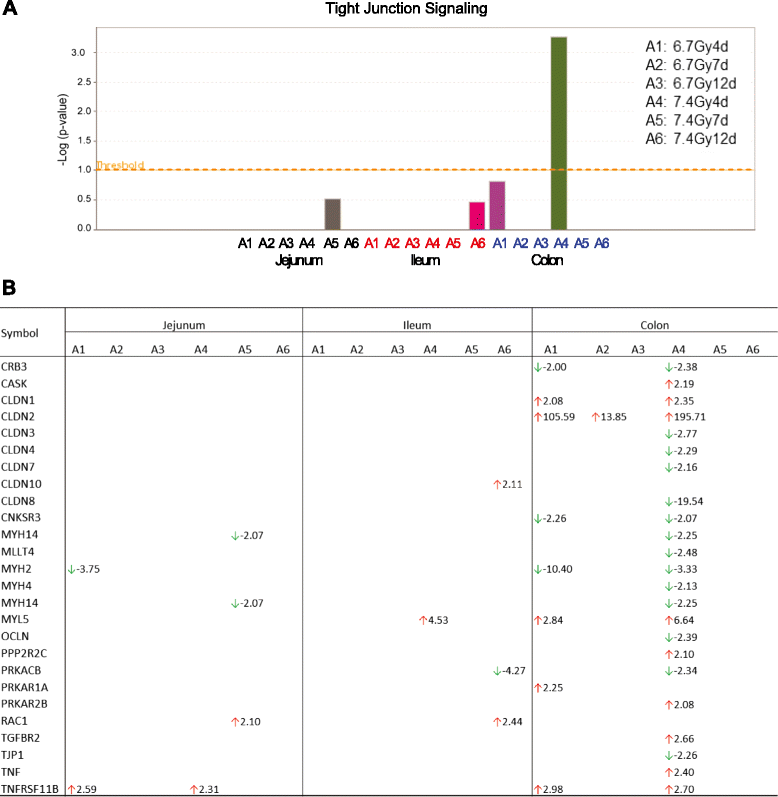
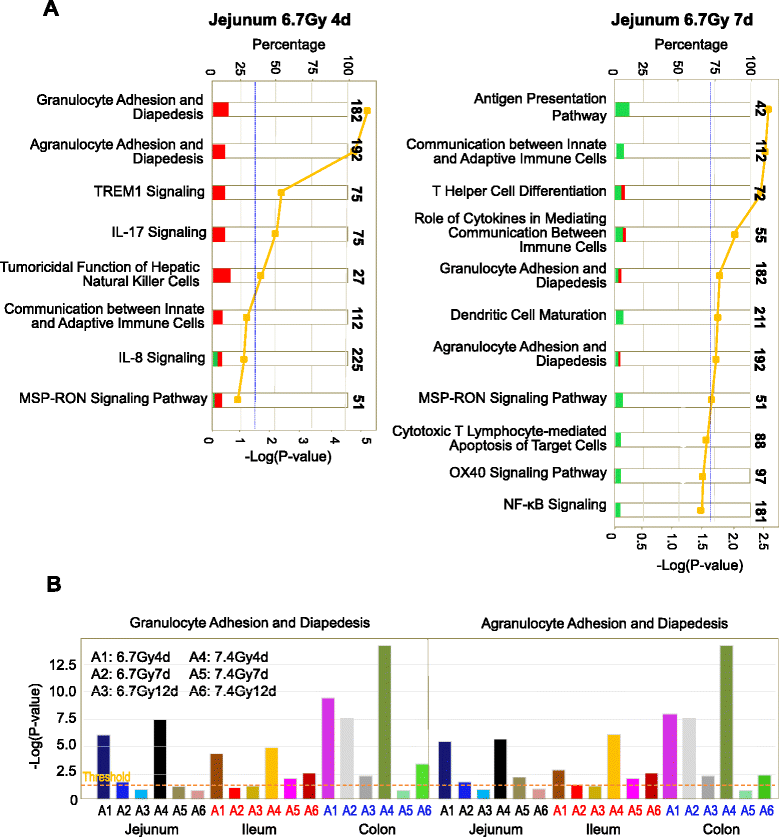
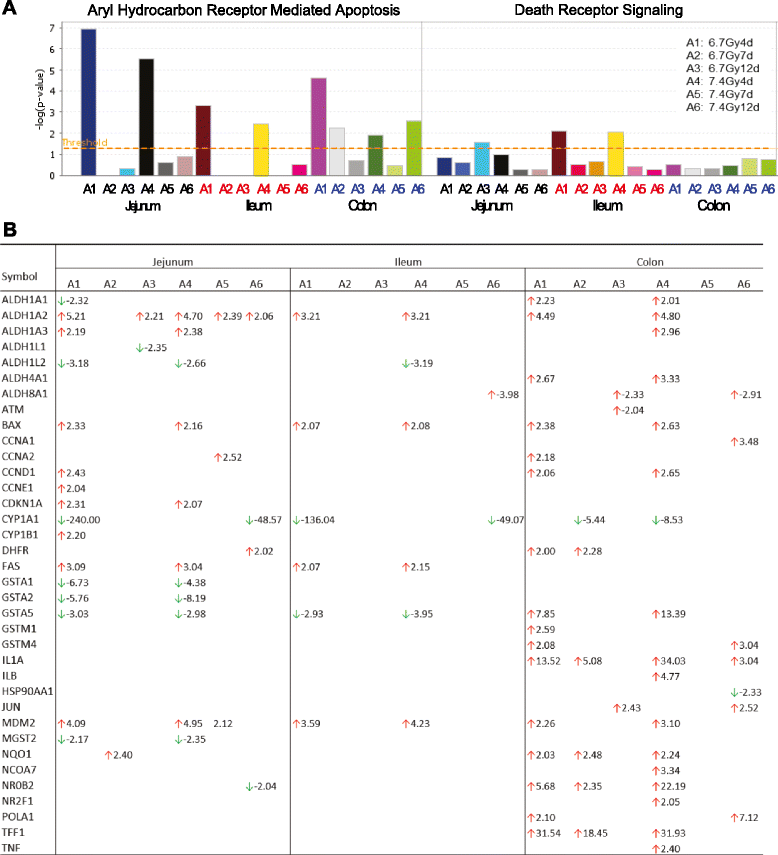
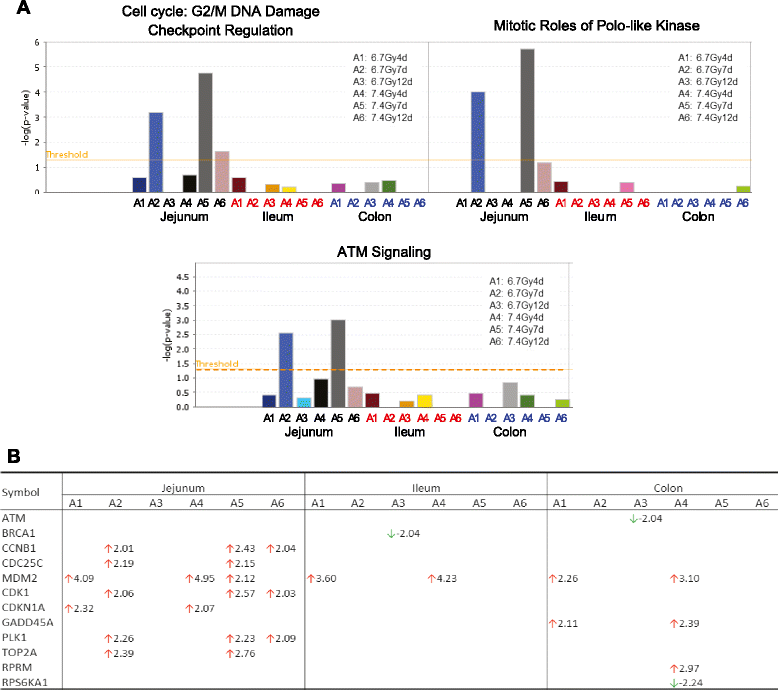

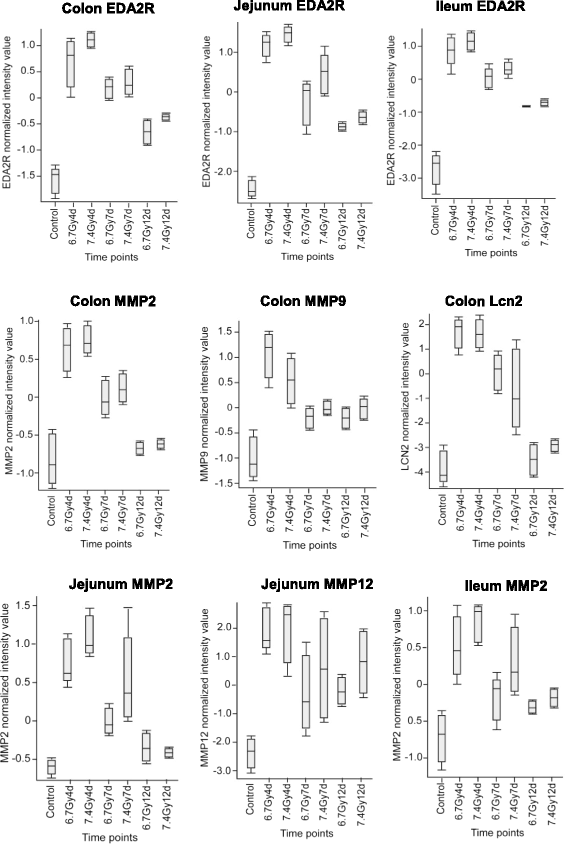
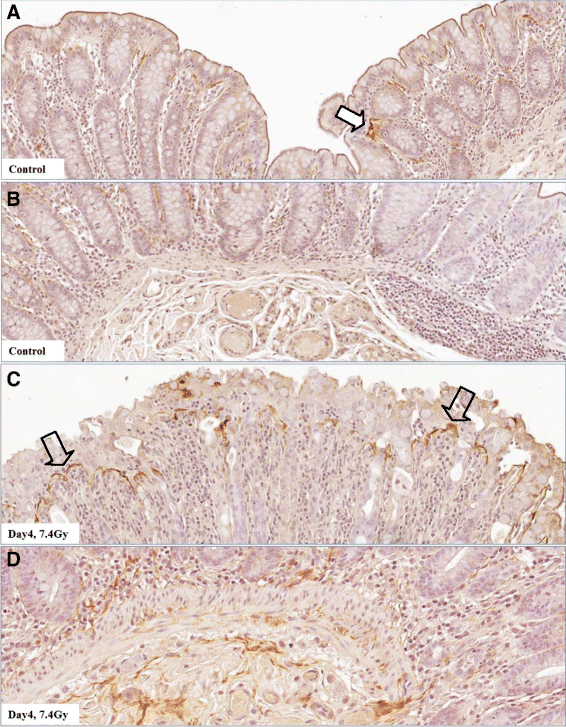
Similar articles
-
Segmental Differences in Radiation-Induced Alterations of Tight Junction-Related Proteins in Non-Human Primate Jejunum, Ileum and Colon.Radiat Res. 2016 Jan;185(1):50-9. doi: 10.1667/RR14157.1. Epub 2015 Dec 31. Radiat Res. 2016. PMID: 26720804 Free PMC article.
-
Transcriptome analysis reveals regional and temporal differences in mucosal immune system development in the small intestine of neonatal calves.BMC Genomics. 2016 Aug 11;17(1):602. doi: 10.1186/s12864-016-2957-y. BMC Genomics. 2016. PMID: 27515123 Free PMC article.
-
Mechanisms Involved in the Development of the Chronic Gastrointestinal Syndrome in Nonhuman Primates after Total-Body Irradiation with Bone Marrow Shielding.Radiat Res. 2016 Jun;185(6):591-603. doi: 10.1667/RR14024.1. Epub 2016 May 25. Radiat Res. 2016. PMID: 27223826 Free PMC article.
-
Gene expression profiles in the intestine of lipopolysaccharide-challenged piglets.Front Biosci (Landmark Ed). 2016 Jan 1;21(3):487-501. doi: 10.2741/4404. Front Biosci (Landmark Ed). 2016. PMID: 26709789 Review.
-
Regulation of intestinal epithelial gene expression in hypoxia.Kidney Int. 2004 Aug;66(2):528-31. doi: 10.1111/j.1523-1755.2004.761_12.x. Kidney Int. 2004. PMID: 15253703 Review.
Cited by
-
Plasticity of Paneth cells and their ability to regulate intestinal stem cells.Stem Cell Res Ther. 2020 Aug 12;11(1):349. doi: 10.1186/s13287-020-01857-7. Stem Cell Res Ther. 2020. PMID: 32787930 Free PMC article. Review.
-
Expression Profile of Housekeeping Genes and Tissue-Specific Genes in Multiple Tissues of Pigs.Animals (Basel). 2022 Dec 15;12(24):3539. doi: 10.3390/ani12243539. Animals (Basel). 2022. PMID: 36552460 Free PMC article.
-
Effects of Microcystin-LR on the Microstructure and Inflammation-Related Factors of Jejunum in Mice.Toxins (Basel). 2019 Aug 21;11(9):482. doi: 10.3390/toxins11090482. Toxins (Basel). 2019. PMID: 31438657 Free PMC article.
-
Polysaccharides extracted from Rheum tanguticum ameliorate radiation-induced enteritis via activation of Nrf2/HO-1.J Radiat Res. 2021 Jan 1;62(1):46-57. doi: 10.1093/jrr/rraa093. J Radiat Res. 2021. PMID: 33140083 Free PMC article.
-
The Butyrogenic and Lactic Bacteria of the Gut Microbiota Determine the Outcome of Allogenic Hematopoietic Cell Transplant.Front Microbiol. 2020 Jul 22;11:1642. doi: 10.3389/fmicb.2020.01642. eCollection 2020. Front Microbiol. 2020. PMID: 32793150 Free PMC article. Review.
References
Publication types
MeSH terms
Substances
Grants and funding
LinkOut - more resources
Full Text Sources
Other Literature Sources
Molecular Biology Databases

